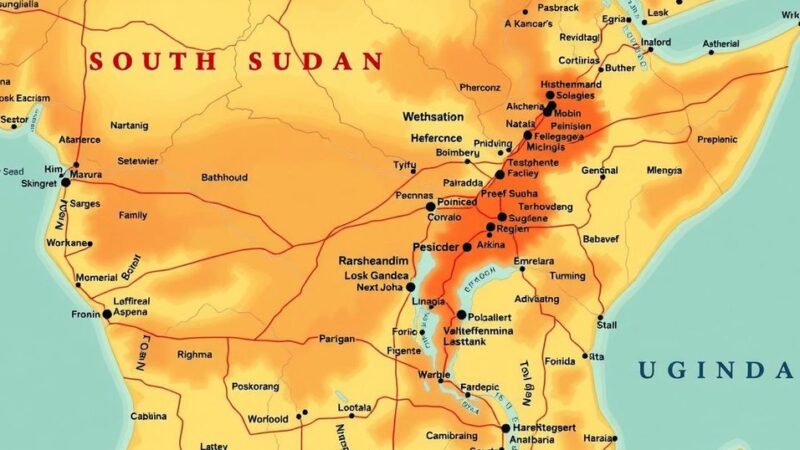The U.S. Department of State has issued Level 4 ‘Do Not Travel’ advisories for various countries including Russia, Yemen, and Afghanistan due to escalating safety risks like crime and political instability. This reflects a significant shift in American travelers’ perceptions of these destinations. The travel industry is likely to adapt in response to these advisories as the spring break season approaches, emphasizing the need for informed decision-making and safety protocols.
In an alarming update, the U.S. Department of State has heightened travel advisories for a range of countries, including popular spring break destinations such as Russia, Jamaica, Colombia, and Yemen. These advisories, now classified as Level 4 (‘Do Not Travel’), have arisen due to escalated concerns about crime, political turmoil, gang violence, and terrorist activity, particularly as the spring break season approaches. Such advisories signal a significant shift in the perception of these once-frequented locations among American tourists.
Many of these countries historically attracted large numbers of American visitors, drawn by their cultural heritage and vibrant atmospheres. However, the new advisories are indicative of a deteriorating security landscape characterized by increased armed robberies, kidnappings, and civil unrest within primary tourist areas, compelling U.S. authorities to issue critical safety warnings for their citizens.
The growing number of nations under Level 4 travel advisories illustrates a disturbing trend, as these advisories alert American travelers to potentially life-threatening conditions resulting from ongoing conflicts and social unrest. The Level 4 designation, the most severe travel warning from the U.S. government, reflects substantive concerns regarding traveler safety in these regions, reinforcing the necessity for Americans to reassess their travel intentions.
As 2025 progresses, heightened travel advisories continue to underscore rising dangers in various global locales, including the Middle East, Africa, Eastern Europe, and beyond. This is prompting U.S. citizens to reconsider their travel plans to destinations currently embroiled in severe security challenges.
To comprehend these advisory designations, it is crucial to recognize how the U.S. Department of State evaluates safety in global destinations. The travel advisory system is structured as a color-coded framework encompassing four distinct levels. A Level 4 advisory specifically denotes increasing violence, instability, and ineffective governance that endangers both locals and foreign travelers alike.
Among those indicated for a Level 4 advisory are Afghanistan, the Democratic Republic of Congo, Lebanon, the Central African Republic, and Belarus. Afghanistan is lauded as perilous due to rampant violence stemming from the ongoing conflict with the Taliban, while the DRC grapples with violence from armed militias. Lebanon, too, is beset with political instability and economic challenges, and tourists to the Central African Republic risk abductions amid civil strife. Likewise, Belarus presents excessive risks related to political repression under President Lukashenko’s regime.
Iraq remains on the list of high-risk nations primarily because of the persistent activities of ISIS, while the ongoing war in Ukraine continues to threaten American citizens amid widespread devastation. Venezuela and Haiti are plagued by political and economic crises, leading to rampant crime, including kidnappings and armed robbery, which the U.S. government finds untenable to risk American lives.
Similarly, Iran’s tense security landscape, marked by ongoing political unrest, increases the risk of detentions for U.S. citizens. Moldova’s current conditions likewise reflect issues prevalent in these countries, emphasizing issues of security, conflict, and governance.
For travelers contemplating visits to these perilous regions, adherence to established safety measures is paramount. This includes consulting the U.S. State Department’s travel advisory website, registering through the Smart Traveler Enrollment Program (STEP), securing comprehensive travel insurance, and maintaining communication with local embassies. Ultimately, travelers must carefully weigh the inherent risks to make informed choices about their safety.
The ramifications of these travel advisories are extensive for the travel industry. Airlines, travel agencies, and tour operators must remain vigilant regarding threats to security and adjust their offerings accordingly. Increased demand for travel insurance tailored to emergency evacuations and medical needs is likely.
The U.S. travel advisory system considers various indicators, such as crime rates, governmental stability, and healthcare availability, to elucidate the advisories’ issuance. The latest reports indicate that these factors drive the heightened advisory levels in specific destinations. Interestingly, despite the risks, many spring break travelers may remain unaware of the advisories or choose to ignore them. Thus, the U.S. government reinforces the need for vigilance and informed planning.
Traveling to high-risk destinations inherently includes potential dangers, and it is the responsibility of the traveler to prioritize safety. With spring break on the horizon, U.S. travelers must recognize the heightened security risks present in several popular destinations, as evidenced by the Level 3 and Level 4 travel advisories. The travel industry is thus expected to adapt accordingly, emphasizing the importance of vigilant planning and risk assessment to ensure a safe vacation experience.
In conclusion, as the spring break season nears, U.S. travelers must remain acutely aware of the increasing safety concerns associated with certain destinations under Level 3 and Level 4 travel advisories. These advisories highlight crucial risks relating to crime and political instability, necessitating that individuals exercise diligence in their travel planning. The resultant impact on the travel industry requires adaptation and heightened awareness to ensure the safety of all travelers.
Original Source: www.travelandtourworld.com






